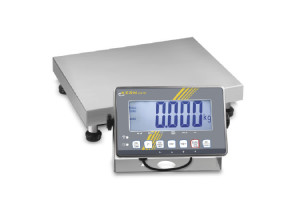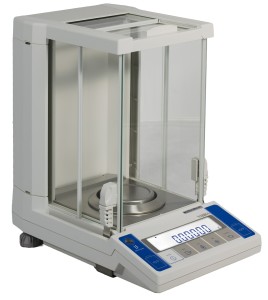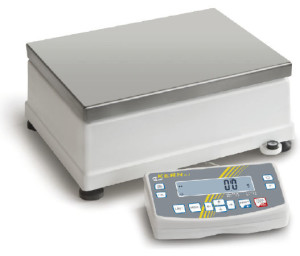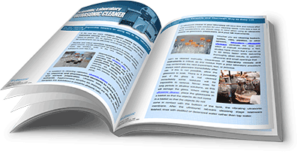Digital Scales
How to Calibrate a Digital Scale
When it comes to explaining how to calibrate a digital scale, here’s a bit of reassurance: Calibrating a digital scale is not that complicated. Because scale calibration is important – required by law in many instances – we offer these instructions on why and how often digital scales should be calibrated.
We’re talking not only precision scales and analytical balances able to weigh in grams and milligrams but also industrial scales weighing in pounds, sales used for recipes, determining percentages, totalizing, counting and other functions used in industry today.
Why you Should Know How to Calibrate a Digital Scale
First of all, as noted above, in many instances it’s required by law. Another source is the National Institute of Standards and Technology’s Weights and Measures Program Requirements, which provides detailed information on this topic.
Why Calibrated Scales are Important
All of us are familiar with transactions where scale accuracy … Read the rest
Analytical Balance Best Practices
It doesn’t take much to throw an analytical balance off. What are the analytical balance best practices to keep your balance without error. The opportunities for errors to occur increase dramatically as the resolution or readout of analytical balances increases. That’s why labs and other users of an analytical balance should establish and post a “best practices” list and remind researchers to employ them at all times.
Once again we refer to the operations manual supplied with analytical balances such as the Kern series offered by Tovatech. These multi-page manuals, however, are not always “user friendly” although most instructions regarding to-do-or-not-to-do are published in the setup pages. Here we provide a brief analytical balance best practices bulletin to serve as a reminder. They are in no particular order of importance because all are important.
That said, a key point to remember is that sensitive balances are sensitive to many extraneous … Read the rest
How to Maintain a Digital Crane Scale
A digital crane scale, while ruggedly constructed to perform heavy lifting and weighing functions, is also a precision instrument that must be maintained on a regular basis. While maintenance is important for any weighing instrument from an accuracy standpoint, heavy-duty crane scales must be checked regularly to avoid a mechanical failure that could cause a load to drop with potential disastrous results.
Crane scale manufacturers such as Kern, whose products are offered by Tovatech, provide maintenance instructions as part of their operations manuals. We’ll use here as an example the Kern HTS industrial hanging scale available in four models with maximum weight capacities from 1500 to 10,000 kg (~3,300 to 22,000 pounds) The scale is powered by a rechargeable battery and is shipped with an infrared, battery-powered remote control with a range of approximately 25 feet.
Crane Scale Maintenance Guidelines
Key lifting components on crane scales include shackles, hooks and … Read the rest
Inventory Management System Pairs Scale and Balance
An accurate inventory management system combining a reference balance and a bulk scale speeds the flow and accuracy of product quantities from the receiving dock through inventory control and outbound shipments. The high resolution Kern FKC stocktaking counting system, available from Tovatech, quickly calculates stock quantities, which can be transferred to a PC for record keeping. A barcode scanner can be integrated with the stock keeping system to reduce errors in stock identification.
The FKC inventory management system combines a KERN KB-N reference balances and a KERN FKA bulk scale.
Inventory Management System Components
1. Reference Quantities
Reference quantities are established with the Kern KB-N reference balance, available in maximum weighing ranges of 120 (KB 120-3N) or 1200 (KB 1200-2N) grams (4.23 or 42.33 ounces) and respective readout of 0.001 and 0.01 g, also representing the minimum piece weight. Individual piece weight is established by weighing a quantity of product … Read the rest
How the Pharmaceutical Industry Uses Precision Scales
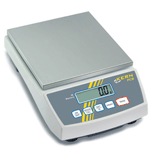
The primary measure of the effectiveness of a pharmaceutical product is how beneficial it is for the patient, while introducing minimal side effects. A vital part of the pharmaceutical manufacturing process occurs at the quality control stage. A variation of a few milligrams in a powerful drug can mean the difference between a nightmare of side effects, a harmless and ineffective placebo, or a valuable treatment method. The key to ensuring that a “wonder drug” achieves the goals that the developers set out for it is careful measurement via a laboratory scale.
Types of Laboratory Scales
Just as various types of microscopes offer the ability for researchers to see items ranging from bacteria down to molecules, different types of laboratory scales offer the ability to measure items to within very small masses. These scales carry specific names to differentiate their levels of readability:
- Precision balances vary in resolution and some have
Dual-Range Industrial Platform Scales with Bluetooth Interface
Scales used in industrial locations can be exposed to a variety of contaminants as well as stresses and strains during their lifetime.
A new family of dual-range industrial platform scales with high ingress protection (IP) ratings against dust and liquids are ideal for general weighing, piece counting, tolerance weighing and filtering out vibrations in harsh operating environments. The dual-range Kern SXS series, available from Tovatech, features an extremely rugged stainless steel platform structure resistant to bending. The silicon-coated load cell has an IP rating of 67 or totally protected against dust (6) and against temporary immersion (7). The backlit stainless steel display connects to the weighing platform by a 2.5 m cable. Wall-mountable, the display has an IP rating of 68 for continuous use in wet areas.
These rugged industrial scales have 2-second stabilization and can be ordered with an optional wireless Bluetooth … Read the rest
Compact Digital Crane Scale with Remote Readout
Time is money, so quickly determining or confirming the weight of products or pallets being loaded or unloaded at warehouses, transportation hubs, construction sites and similar locations is quickly accomplished using a compact Kern HFC digital crane scale with remote readout. This allows personnel to confirm weight against manifests when they are as far as 100 meters (328 feet) away from the crane scale.
Working as a tensile force gauge, Kern HFC crane scales available from Tovatech are offered in four maximum weigh capacities: 1000, 3000, 5000 and 10,000 kg. Respective readouts are 500, 1,000, 2,000 and 5,000 grams.
Both the digital crane scale and remote hand-held display device are powered by rechargeable batteries for up to 30 hours of operation or by optional 3 x 1.5 volt AA batteries for up to 40 hours of operation.
The Kern digital crane scale display modules have an on-off switch and are … Read the rest
Semi-Micro Analytical Balance Simplifies High Resolution Weighing
The LF-225 DR multi-function dual-range semi-micro analytical balance offered by Tovatech is an ideal solution when highly accurate weighing is required on a regular basis. This balance is crafted in Japan with exceptional quality workmanship. Researchers, jewelers and others can benefit from the readability of 0.01 mg up to a 92 g capacity or 0.1 mg up to a 220 g capacity. Linearity in these ranges is ±0.03 and ±0.02 mg; repeatability is ±0.02 and ±0.1 mg respectively.
The USB port on this Windows® compatible balance simplifies transfer of data to a pc or printer.
Featuring a one-key calibration function the LF-225 DR semi-micro balance has internal weigh chamber dimensions of 6 x 6.25 x 9 inches, an unusually tall space. The novel sliding door mechanism permits users to open the right side glass door with the left hand while placing samples on the weighing … Read the rest
Understanding the 3 Rs + L of an Analytical Balance
Selecting the correct analytical balance for precise weighing is not an easy task. We’ve covered several key points in previous posts but it’s always a good idea to provide a refresher course – especially as it relates to terminology that is sometimes confusing yet important. In this case it’s the 3 Rs: readout, repeatability and reproducibility plus linearity.
We also provide hints on applying these criteria to selecting a lab scale.
R #1: What’s readout? Also called readability it’s what you can read on the scale’s display panel. Simple enough but in terms of specification you’ll have to decide on what you require in terms of the smallest difference displayed when weighing. Usually its 0.1 milligram but in the case of a semi-micro balance it may be 0.01 mg.
R #2: Repeatability is the ability of a balance to display the same result when an object is repeatedly placed … Read the rest
Scale with Remote Display Gives 0.1g Resolution
The separate weighing platform of the new ILS 50K and companion ILS 30K, 50 kg and 30 kg capacity industrial scales, each with 0.1 g resolution and a 5 g minimum load, makes these laboratory balances ideal quality control instruments for accurately weighing heavy toxic, odor-emitting or contaminated samples under fume hoods or in glove bags. The rugged stainless steel weighing platform handles compact high-density samples such as drilled cores and sawed beams of concrete, and is connected to the control and display unit by a cable approximately 1 meter long.
Now available from Tovatech, these lab scales are offered with external calibration (the ILS configuration using a separately purchased 30 or 50 kg weight) or with automatic internal calibration (the ILJ configuration). ILJ models will re-calibrate every 3 hours or when there is a temperature change of 3⁰C or more.… Read the rest


